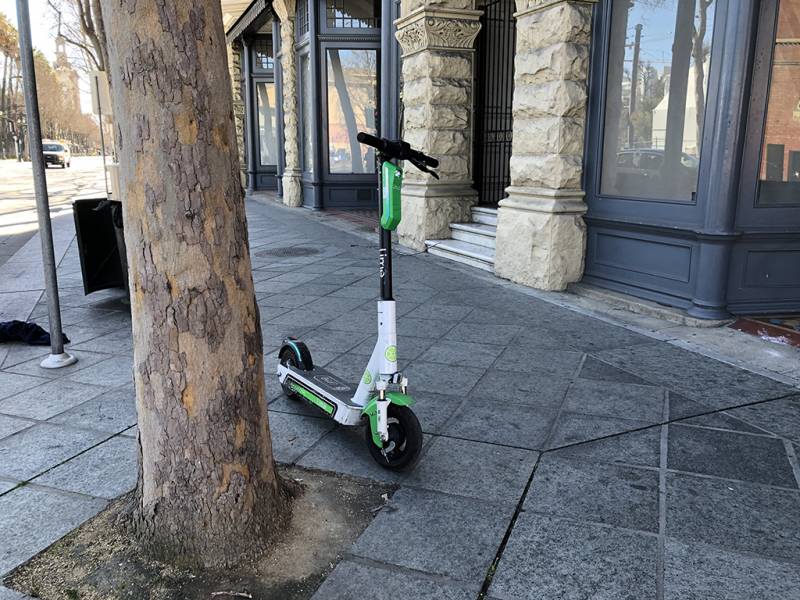Lime scooters detect those differences and can identify with 95 percent accuracy whether someone is riding on the sidewalk or the road. Riders who spend more than half of their journey on a sidewalk get a reminder on their phone that riding on the sidewalk is illegal.
“And for more habitual offenders, we can send them a more stern warning and we can experiment with different educational ways in which we can try to alter rider behavior,” Kang said.
Grüv, another electric scooter company, plans to go a step further with their new software, according to co-founder Alex Nesic.
“Rather than simply informing riders of bad behavior with the hope of nudging them toward better behavior, our approach is designed to decrease the vehicle speed to five miles per hour on sidewalks in real-time while alerting the rider simultaneously of the reason why,” Nesic said.
Colin Heyne, a public information manager with the San Jose Department of Transportation, said he has yet to see a company in San Jose that incorporates all of the e-scooter safety technologies available — one that detects sidewalk riding and one that reduces an e-scooter's speed when on the sidewalk.
“Our next step will be to limit deployment of the [scooter] devices in the area defined in our regulations until companies are ready to deploy devices that meet our regulatory requirements,” Heyne said.
The city hopes to eventually require companies to incorporate the safety technologies that will encourage riders to stay away from sidewalks.
Rakhra, the SJSU student, said she rides her scooter on the sidewalk because she doesn’t always feel safe riding on the road. As she stands on 2nd street in downtown San Jose, she said, “If I’m trying to cross here, there is no bike lane … so it just depends on where you’re at.”
